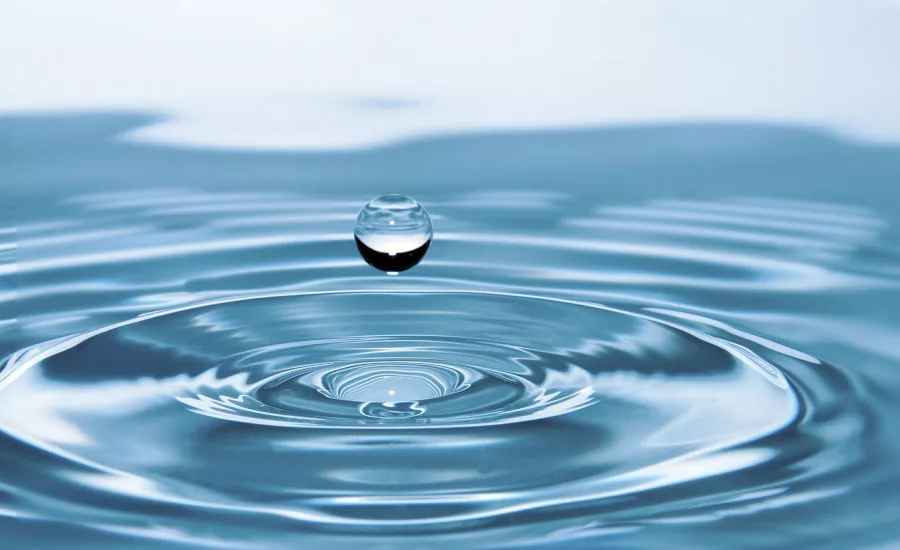A Water-Efficiency Standard Ahead of Its Time

The 2017 Water Efficiency and Sanitation Standard (WE•Stand) was the culmination of a 10-year effort to develop codified water-efficiency provisions that would result in a 20% reduction in water use from the minimum code requirements contained in the Uniform Plumbing Code (UPC).
The 2017 WE•Stand has strong provisions in place for alternate water sources applied toward untreated gray water systems for subsurface and subsoil irrigation and mulch basins, as well as rainwater and reclaimed (recycled) water systems. There are also provisions for onsite treated nonpotable water systems using devices listed to NSF 350. NSF 350 includes gray water, residential wastewater and commercial treatment systems.
The WE•Stand technical committee, which brings together an impressive and diverse assembly of plumbing and water efficiency experts, is currently developing the 2020 WE•Stand.
Here are the top five innovations being considered for the 2020 We•Stand:
- A new approach for blackwater and stormwater treatment systems
The We•Stand technical committee is considering a new approach advocating risk-based performance criteria developed by the National Water Research Institute (NWRI), sponsored by the Water Environment & Reuse Foundation (WE&RF), and recommended by the National Blue-Ribbon Commission for Onsite Non-potable Water Systems. The risk-based framework’s goal is to determine the appropriate level of treatment for pathogens that is needed to protect public health, accounting for such factors as the source water quality, specific end use and acceptable risk of infection from exposure to the treated water.
The treatment requirements developed using the risk-based methodology are called log reduction targets (LRTs). The LRTs were developed using a Quantitative Microbial Risk Assessment (QMRA). QMRA is a scientific approach to estimating the potential human health risks associated with exposure to microbial hazards (e.g. human pathogenic viruses, bacteria, and protozoa). This new approach is still under the scrutiny of the technical committee, with the task group further investigating health information and provisional system requirements.
- Non-sewered sanitation systems (NSSS)
These prefabricated integrated treatment units comply with ISO 30500 and are designed for operation without a sewer connection and, in many cases, without a dedicated water supply. The NSSS carries important implications for water and wastewater management and utility service in North America from national parks to suburban shopping malls to net-zero homes. This new technology achieves sustainable sanitation solutions that provide complete and effective treatment of human sanitary waste onsite. The IAPMO Group is steering a committee to develop an American National Standard of ISO 30500.
- Addressing the unintended consequences from ultra-efficient commercial dishwashers that discharge into a grease interceptor by requiring a temperature maintenance for grease interceptors not to exceed 95° F (35° C)
Over the past few years, a new generation of ultra-energy-efficient and water-efficient commercial dishwashers has been introduced into the market and continues to replace older, less efficient dishwashers. While such dishwashers use considerably less water, they require more heat to achieve the same cleaning action and to ensure appropriate sterilization, raising the minimum water temperature to 185° F (85° C) for all commercial food service dishwashers. Such discharge temperatures are not only problematic for the plumbing system, but also severely impede the capability of grease interceptors (GI) to function. Such GIs typically require an effluent temperature of 95° F (35 °C) or less to effectively separate and sequester the FOGs.
Related to hot temperature waste discharging into a grease interceptor is high-temperature waste discharging into the drainage system. Plumbing codes limit the hot water waste discharge into the sanitary system to 140° F (60° C). A common solution is to blend the hot water discharge with potable water. This is not only wasteful of water but increasingly is not allowed in some municipalities that place limits on how much potable water a facility can use. A solution proposed in WE•Stand requires the use of only alternate water sources (gray water, rainwater, air conditioning condensate) to replace municipally supplied potable water to buffer the discharge water temperature. Another solution is to reclaim the heat discharged to the drain, with a heat exchanger, for beneficial use (such as preheating cold water makeup to the water heaters).
- The implementation of sustainable plants when designing landscaping
Plant selection can have a large impact on irrigation water needs. The technical committee agreed that most of the landscape plant selection must be compatible with the natural rainfall. This means that plants not requiring supplemental irrigation are required for at least 60% of the landscape. Desert communities with fewer than 12 inches of annual rainfall are an exception and may have a complete vegetative landscape with an in-ground irrigation system. The technical committee also agreed to allow alternate water sources (except reclaimed water) to be used in irrigation systems to irrigate 100 percent of the landscape.
- Whether the performance paths in WERS and HERS H2O can be used as an alternative path in WE•Stand
This will likely go beyond the development timeline of the 2020 WE•Stand. This is a work in progress initiated in 2018 that will extend into the next code cycle depending on the results of the research. The technical committee commissioned a task group to work with the RESNET and WERS organizations to develop an analysis to determine if either system can be used as a performance path for WE•Stand.
IAPMO employs a voluntary consensus development process accredited by the American National Standards Institute (ANSI) for the development of WE•Stand, enabling anyone to have a voice in the development of the standard. In September 2015, ANSI granted IAPMO Audited Designator status in the standard’s development. Accordingly, WE•Stand was designated as an American National Standard immediately upon finalization, without the need for review by the ANSI Board of Standards Review.
Such innovations show that WE•Stand is indeed a water-efficiency standard ahead of its time. It moves with foresight and intentionality, as well as caution, toward protecting the public’s health and safety. Backed by an unmatched depth of subject experts, research and sound conclusions, it invites innovative technology, new ideas and problem solvers. WE•Stand is as robust a standard as the nation’s water-conservation needs require it to be.
Looking for a reprint of this article?
From high-res PDFs to custom plaques, order your copy today!








